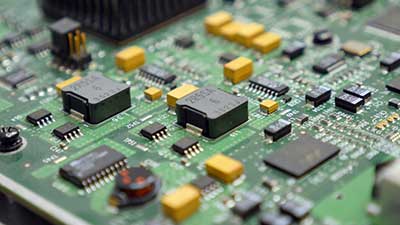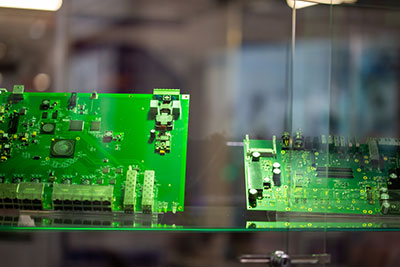Like motion detection sensors, safes can help you rest easy by keeping your valuables secure from burglars and intruders.
But they operate differently from these sensors. And the mechanism that keeps the safety barrier intact depends on the safe lock type. So let’s begin by looking at these safe lock types to see how the locks work.
Contents
Special Offer: Get $200 off your order!
Email [email protected] to get started!
Table of Contents
Safe Lock Types
Safes can have either of these three lock types.
Mechanical Locks
These locking mechanisms have mechanical dials with zero electrical components. You might have seen these safes in movies, where thieves use devices like stethoscopes to listen to the wheels rotating inside to unlock the door.

A rotary knob for a mechanical safe
Opening this lock is a bit technical. Spin the knob 4-5 times to the right to reset the system.
If it has a four-code lock key, turn the knob to the left four times past the first number and stop at that 1st digit.
After that, rotate the knob right past the second number three times and stop at the 2nd number.
Go back left past the third number once and stop at the 3rd number. Lastly, turn the dial slowly in the opposite direction until it stops.
The internal bolt should retract.
This locking system is difficult to hack but takes more time to open. And you have to redo the process from the beginning if you mess up.
How They Work
These mechanical locks feature wheel packs with a similar premise design.
This pack contains the same number of wheels as the digits in the combo (one for each digit). These wheels rotate the drive cam as you turn the dial.

A combination dial safe mechanical lock and key lock
When you turn the dial and get the first digit right, the drive cam’s drive pin contacts a tiny tab on the closest wheel, making it rotate.
The process continues until you enter all correct digits to get all wheels spinning. Each wheel has a notch on the axle.
These notches align when you enter the accurate combo.
When aligned, the wheels create a gap that disengages the hasp.
The fence, a short metal bar connected to a lever, slips under the pressure of its weight into this gap, allowing the bolt to go through the gate and unlock the safe.
Before dialing in the code combination, the gate prevents access into the safe by sitting on the wheels, which does not allow the door’s bolt through.
But after entering the correct combo lock code, the safe’s door bolt goes through to unlock the system.
Electronic Locks
Digital or electronic combination lock safes are more typical in hotel rooms, and they usually have a number pad to enter the pre-set 4-6 digit code.
This electronic keypad is the safe’s lock, and it releases an intrinsic lock after entering the correct combination code.
Once released, you can turn the handle to open the door and access the contents inside the safe.

A man entering a code on a steel safe with an electronic lock in a hotel room
How Do Safe Locks Work: How They Work
These battery-powered locks operate like traditional mechanical safes internally but have several advantages over the traditional type.
- Operational simplicity: Entering a code on a number pad is easier than dialing in the same combination using the steps explained earlier for mechanical locks. So you’ll spend less time accessing the safe. Also, you can easily change the combination code so a number you’ve already memorized to avoid forgetting. Changing the combination in mechanical locks is possible but requires more work. You have to go to a professional locksmith to get it done.
- Better security: It is possible to layer extra security steps in an electronic lock system to make it safer and more dependable.
- Reliability: Battery-powered electronic locks have improved and become more reliable over time. And if you want maximum reliability, buy a safe with a UL-listed electronic combination lock. This sticker proves the lock has undergone and passed rigorous testing.

A close-up image of an electronic safe lock with a tiny screen to show the status
But these safes have their disadvantages, as well. They include:
- Battery replacement: Batteries don’t last forever. And when dead, some locks can forget your combination. So we recommend buying electronic locks with a backup battery to keep the lock running when the primary one dies. And it should warn you if the battery is low. Lastly, ensure the electronic safe has permanent memory to hold your combination code if the battery runs out.
- High cost: Battery-powered electronic locks are costlier than their mechanical counterparts.

A safe’s door with code locks
How to Do Safe Locks Work: Biometric Locks
Biometrics are body measurements related to human characteristics. So these locks measure a part of the owner’s body to unlock the safe.
Biometric finger-scan locks are the most typical, but you can get facial recognition and retinal-scan biometric safes.

A fingerprint biometric scanner
How Do Safe Locks Work: How They Work
Biometric safe locks operate like electronic locks but have a facial, fingerprint, or retina scanner instead of a number pad.
So before use, you have to enroll your face, retinas, or more than one finger to store the data in the lock’s memory.
When opening the safe, the lock will compare the current scan with the one stored in memory. If the body measurements match, you will get access.
This mechanism has two advantages over the conventional electric type. One is you don’t need to memorize the digital code.
Two, you don’t have to worry about someone stealing your code.
Wrap Up
Biometric and number code locks fall under the electronic category, with the difference between them being the digital code data.
But mechanical safe locks are entirely different.
Their unlocking mechanism makes them challenging to open, and changing the combination code requires you to find a trusted locksmith.
So although costlier, electronic and biometric safes have become more popular.
Special Offer: Get $200 off your order!
Email [email protected] to get started!






